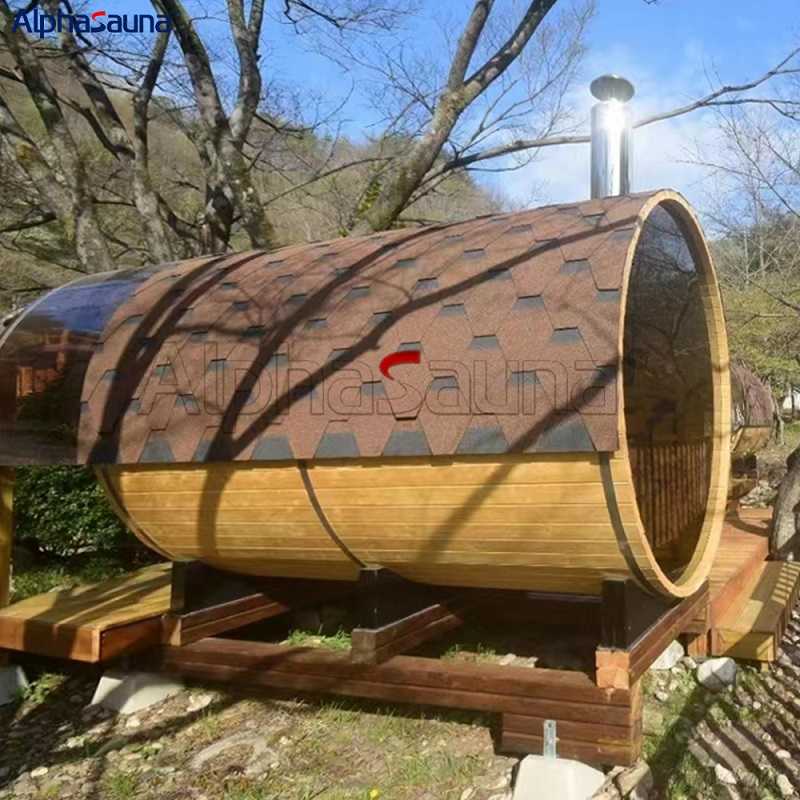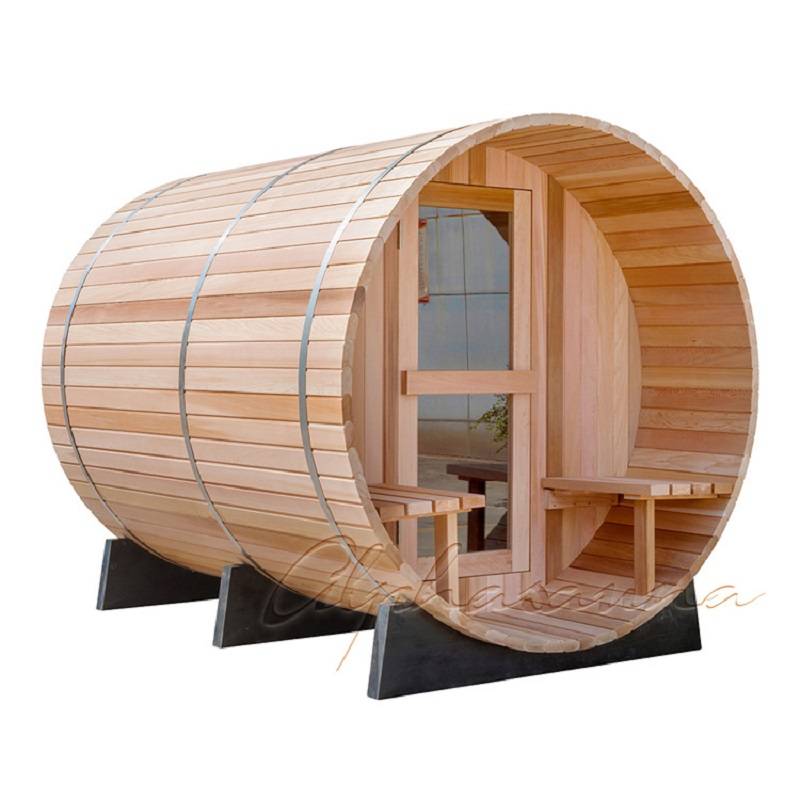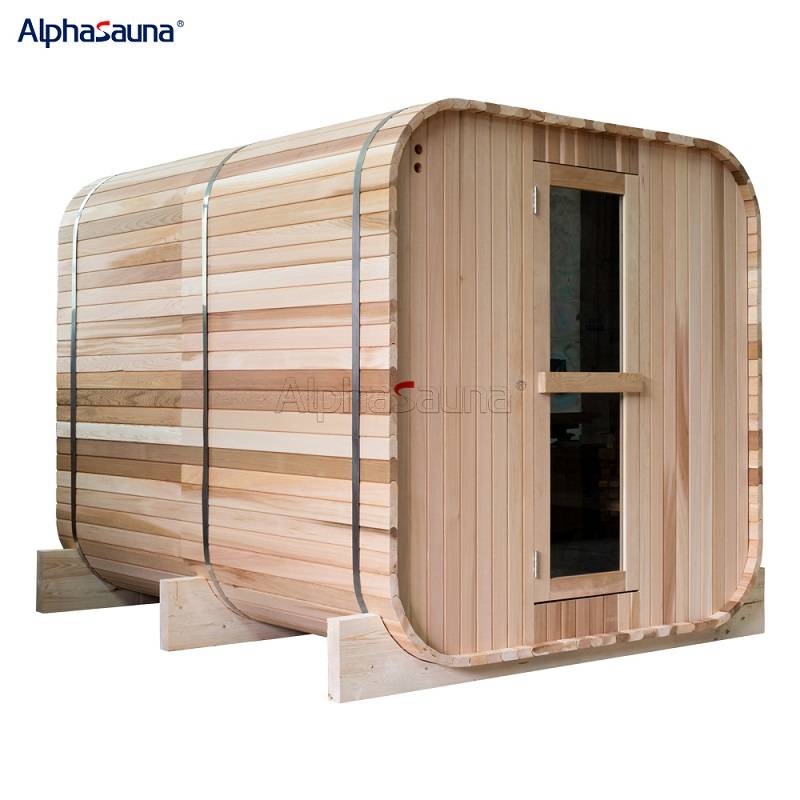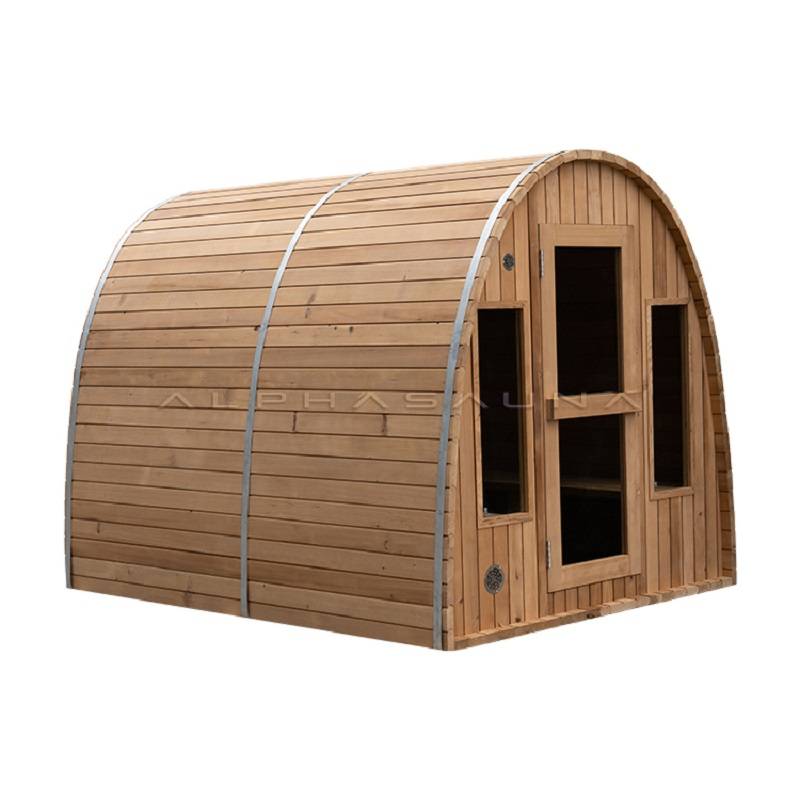How to do sauna properly?
Sauna has a long history, originating from the Nordic region, especially Finland. As early as ancient times, people discovered that a high-temperature environment could
alleviate bodily fatigue. Therefore, they began to increase the temperature inside their homes by pouring water onto heated stones, thus generating steam. With the
advancement of technology, the forms of saunas became increasingly diverse, and the design and technology of sauna facilities continued to be improved and
innovated. Sauna gradually became regarded as a leisure activity for relaxing the mind and body and promoting health, becoming a way of life for many people.

Sauna culture has spread to many countries and is increasingly loved by more and more people. The rapid acceptance and popularity of saunas are closely related to the benefits they
can bring. With the improvement of people's quality of life, there is a growing emphasis on physical health. Research has shown that the sauna helps improve blood circulation, reduce
stress, alleviate fatigue, cleanse the skin, relax muscles, and so on. Therefore, if you want to engage in activities beneficial to your physical health, you may consider sauna as a priority.
We can purchase a sauna room to place in the backyard of our home, allowing us to sauna anytime and anywhere, which is not only convenient but also time-saving. After a day's work,
returning home and lying in a comfortable sauna room or hot/cold tub can help relieve the fatigue of the day. Alternatively, one can visit specialized sauna facilities for sauna sessions.
If you want to enjoy the pleasure of sauna at home, you can continue reading as I will introduce various types of sauna rooms that can be customized according to your preferences.
Our company supports the customization of sauna rooms, so feel free to learn more and consult if interested.
Home outdoor sauna
Square sauna house:
A square sauna house is typically constructed from wood or other heat-resistant materials and is equipped with heating devices such as a stove or electric heater to raise the air temperature
inside the sauna. For the sauna stove, a DIY sauna heater can be an option. The square sauna house is a square-shaped structure designed to provide a sauna experience by elevating the
temperature inside the room, similar to traditional sauna houses. Square sauna houses are often customizable in terms of size and design to meet the specific requirements of different locations.
They can be built indoors or outdoors, and customization in size and design makes them popular among many people. Additionally, sauna houses typically feature doors, windows, and ventilation
facilities, providing a relatively safe environment during sauna sessions. With a simple structure and design, square sauna houses are easy to install and maintain, making them a preferred choice
for many individuals.
Barrel Sauna:
The barrel sauna is a sauna house with a unique shape, resembling that of a large barrel. Typically constructed from wood materials such as cedar, pine, or spruce, the barrel sauna boasts excellent
insulation properties and heat resistance, making it ideal for sauna construction. Its distinctive cylindrical shape, with a slightly tapered top, aids in air circulation within the sauna. Similar to square
sauna houses, it is also heated using a stove or electric heater to elevate the temperature. Barrel saunas are often placed outdoors but can also be installed indoors. Due to its unique design, it is
favored by many individuals.
Infrared Sauna:
The infrared sauna differs from traditional saunas in that it utilizes infrared radiation to heat the body rather than heating the air. These infrared rays, which typically include far-infrared,
mid-infrared, and near-infrared, penetrate the skin directly, generating heat and accelerating blood circulation to raise body temperature. Unlike traditional saunas, infrared saunas do not heat
the air extensively, resulting in lower temperatures inside the sauna. This feature prevents people from feeling excessively hot, providing a more comfortable environment. Infrared saunas only need
to heat the body, rather than the entire room, resulting in relatively lower energy consumption. Additionally, infrared saunas heat up quickly, offering convenience and saving waiting time. For
those who prefer lower temperatures and are prone to feeling stifled by heat, the infrared sauna is a preferable choice. Infrared saunas also offer benefits such as promoting blood circulation,
relieving muscle pain, reducing stress, and relaxing the body and mind.
Oval Sauna:
The oval sauna is a sauna house with a uniquely shaped structure resembling an olive. Constructed primarily from wood or other heat-resistant materials, it offers excellent insulation and
durability. Similar to other sauna types, it is heated using a stove or electric heater. Oval saunas typically provide ample space for multiple people to use and may come with seating or relaxation
areas. With its distinctive appearance and spacious interior, the oval sauna attracts the attention of many individuals.
Fillers Sauna:
The fillers sauna is a type of sauna equipment that is inflated to form a sauna space, eliminating the need for a fixed structure like traditional saunas. Constructed mainly from heat-resistant
materials such as PVC or other plastics, inflatable saunas offer good heat resistance. They can be conveniently folded and stored, making them lightweight and easy to carry. Furthermore,
they require a simple setup, only needing to be inflated, thus eliminating the construction process. Compared to traditional saunas, inflatable saunas are more affordable, making them
economically viable. Offering a convenient and cost-effective sauna experience, inflatable saunas are becoming increasingly popular. If you are interested in this type of sauna, you can learn
more and inquire through this article.
 The aforementioned are different types of saunas. Despite their varying shapes and forms, they yield similar effects, providing numerous.
The aforementioned are different types of saunas. Despite their varying shapes and forms, they yield similar effects, providing numerous.
Are saunas good for you?
In general, sauna has certain benefits for the body, although its effects may vary from person to person, and it may also have negative effects on a very small number of individuals.
Here are some of the potential benefits of sauna:
Benefits of Sauna:
In a high-temperature environment, the body undergoes vasodilation, which promotes blood circulation and helps boost metabolism. Additionally, the muscles relax due to the stimulation
of heat, aiding in the relief of muscle pain and fatigue. The comfortable atmosphere of the sauna fosters relaxation, promoting mental and emotional well-being. Sauna can also enhance
the body's immune system, helping to prevent colds and other illnesses. Sweating profusely in the high-temperature environment of the sauna aids in the elimination of toxins and impurities,
improving skin quality. The sauna can also alleviate stress and anxiety, contributing to better sleep quality. As a method for relaxation and fatigue relief, the sauna offers numerous benefits for
the body and is thus beloved by many.
Please note that while sauna generally offers benefits, it's important to be aware of individual differences and potential adverse effects they may have on certain individuals.

Due to its beneficial effects on human health, the sauna is beloved by many athletes and fitness enthusiasts, who use it as a means of post-exercise recovery. Participating in sauna sessions
after exercise helps accelerate muscle recovery, and alleviate muscle fatigue, pain, and tightness, thus promoting muscle relaxation and overall bodily recovery. However, it is important to
prioritize safety and use the sauna correctly. Caution should be exercised when participating in sauna sessions after exercise to avoid overexertion or dehydration. Throughout the sauna session,
it is crucial to stay hydrated and avoid prolonged stays in the sauna room to prevent symptoms such as dizziness, nausea, and fatigue. Individuals with heart disease, hypertension, or other
cardiovascular conditions should consult a doctor before deciding to use the sauna to ensure their health and safety.

How long to use the sauna after workout?
For this issue, it depends on the individual constitution. Different people have different physical conditions, tolerance levels, and adaptability. Generally, after engaging in light to moderate
exercise, it takes about 10 to 30 minutes for the body to cool down to normal temperature. It is recommended to wait at least 10 to 15 minutes after exercise before entering the sauna to
ensure adequate cooling time and hydration of the body. During sauna sessions, it's important to stay hydrated to avoid symptoms like dizziness, fatigue, or dehydration. If feeling unwell,
one should immediately leave the sauna and rest in a well-ventilated area.
In summary, using a sauna properly can offer significant benefits to the body. However, it's crucial to understand the correct usage of saunas before engaging in them to avoid any negative
impacts on the body. I hope this article has addressed some of your concerns. If you are interested in purchasing or customizing a sauna room, feel free to explore our products.








